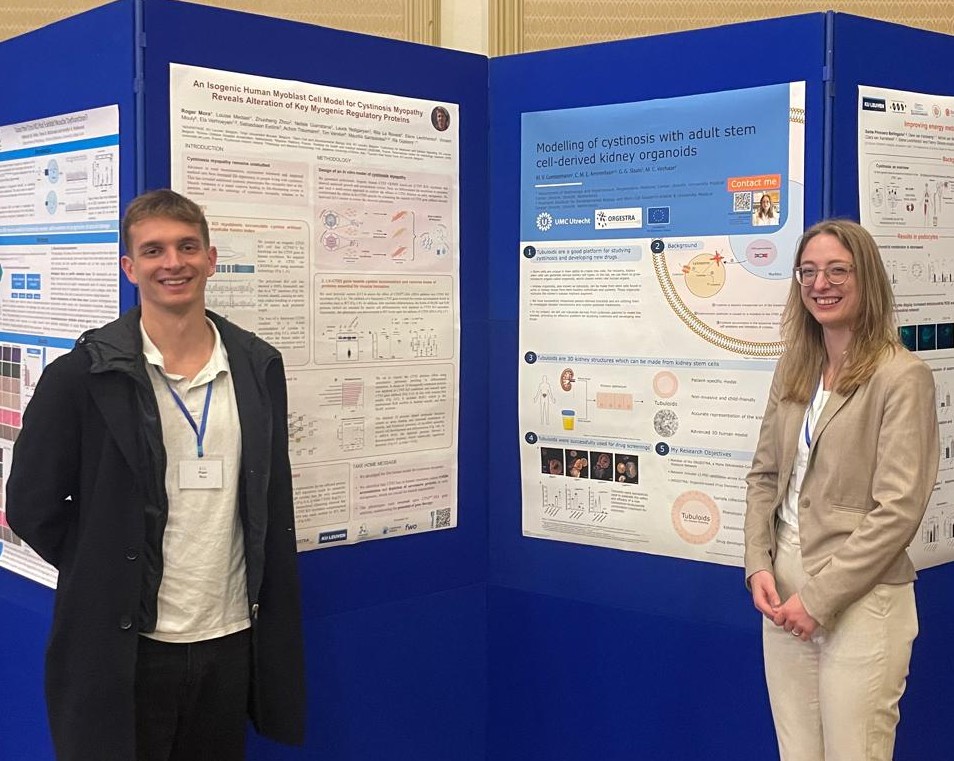What is Cystinosis?
Cystinosis is a rare genetic disease that affects about 1 in 100,000 to 200,000 people worldwide. It is caused by a mutation in a gene called CTNS, which provides instructions for making a protein called cystinosin. This protein’s job is to remove cystine—a building block of proteins—from tiny storage compartments inside our cells called lysosomes.
In healthy cells, cystine is transported out of the lysosomes and recycled. But in people with cystinosis, the faulty CTNS gene causes cystinosin to not work properly. As a result, cystine accumulates inside the lysosomes, and impairs the cell functions.
How Does Cystinosis Affect the Body?
Cystinosis impacts several organs, with the kidneys, eyes, and muscles being most affected. In early childhood, it often causes Fanconi syndrome, where the kidneys lose important nutrients, leading to kidney failure if untreated. Crystals in the eyes can cause pain, light sensitivity, and vision problems. In older patients, the disease may weaken muscles, leading to difficulty swallowing and reduced mobility. Other systems, like the thyroid, pancreas, and nervous system, can also be affected, making cystinosis a complex, multi-system condition that needs lifelong care.
Is there a cure?
The current treatment for cystinosis is a small drug, cysteamine, that is capable of clearing the cystine accumulated in cells. It has improved the life expectancy of people with cystinosis, and it helps in delaying the symptoms. Nevertheless, it does not cure the disease and has many secondary effects such as nausea, unpleasant body and breath odor, vomiting, fatigue… In addition, people with cystinosis need to take more than 30 pills a day. That is the equivalent of two hands full of pills!
Where is the current research on Cystinosis?
Scientists are working hard to better understand and find better and long-term solutions for cystinosis. Before a new treatment for a disease can be tried in humans, it needs to be tested in cells and in animal models, to check safety and success. It all starts in the lab: for example, some of our projects involve growing cystinotic cells in vitro to mimic what is going on in the tissues of people with cystinosis. With these models we aim to both understand the mechanisms of the disease and use them to test new treatments.
Some emerging therapies include better drugs, stem cell therapy and gene therapy. Gene therapy consists of adding fully functional genes back into the cells. It is no longer science fiction: gene therapy has already been clinically approved for more than 30 different genetic diseases, and it is being tested in more than 1.000 clinical trials! In fact, there is currently one clinical trial of gene therapy for cystinosis which involves the genetic modification and transplant of stem cells into patients.
Involvement of people living with Cystinosis.
Active involvement of scientists and patients is essential for advancing meaningful and ethical medical research. On one hand, researchers bring innovation in developing new tools and understanding the mechanisms of disease. And on the other hand, people living with the disease bring their lived experience, clinical trial designs and essential information on their needs and priorities. When these visions work in partnership, they accelerate scientific progress, improve clinical success and ensure that scientific advances are relevant, accessible and have a true impact.
One of the most important gatherings that brings together researchers, clinicians, families, and patients affected by cystinosis is the Dublin Cystinosis Workshop, organized by Cystinosis Ireland. This year’s workshop focused on the kidney aspects of cystinosis, a central challenge of the disease that continues to impact patients from early childhood. To make research more accessible for cystinosis patients and their families, different scientists founded by Cystinosis Ireland gave an update on their projects.
Two PhD students from the ORGESTRA consortium, Roger Mora (DC9) and Martje Grensemann (DC1), had the opportunity to attend and present their doctoral projects. Their work focuses on understanding cystinosis at a cellular level using tubuloids and myoblasts – mini-kidneys and mini-muscles grown in the lab – and developing gene-based therapies. They presented their research in a 3-minute pitch for the families of people with cystinosis, and participated in the poster symposium in front of cystinosis experts across Europe.
This is what our DCs thought about the conference:
“Attending the Dublin Cystinosis Ireland Workshop 2025 was a valuable and motivating experience. Having the chance to be part of the poster session and giving a talk at my first scientific conference was super fun!”
“The Dublin Cystinosis Workshop made me feel deeply part of community united by purpose and hope. I am looking forward to seeing how all together we can contribute to a better understanding of cystinosis”.



